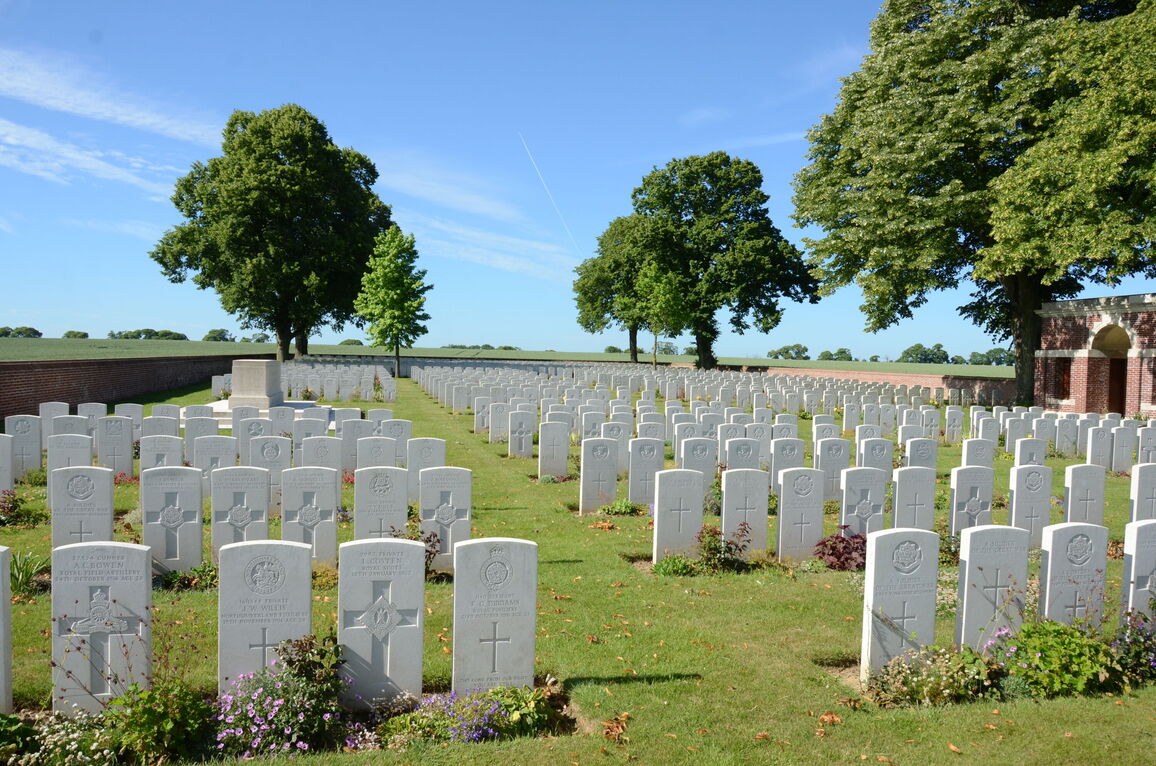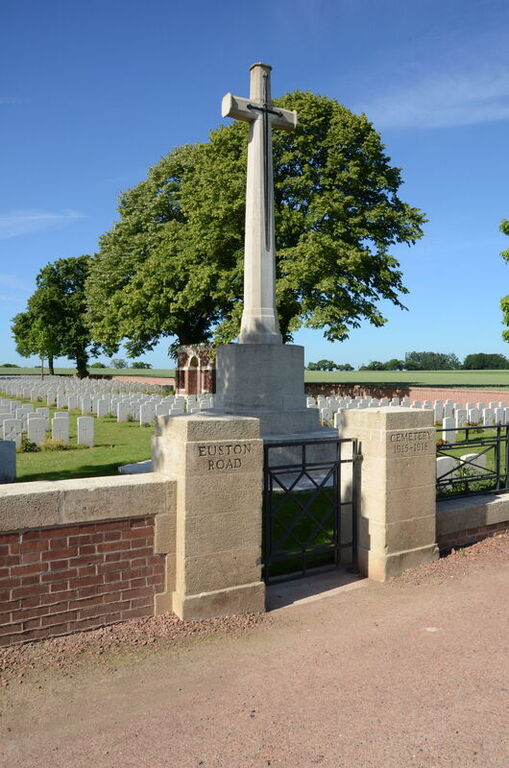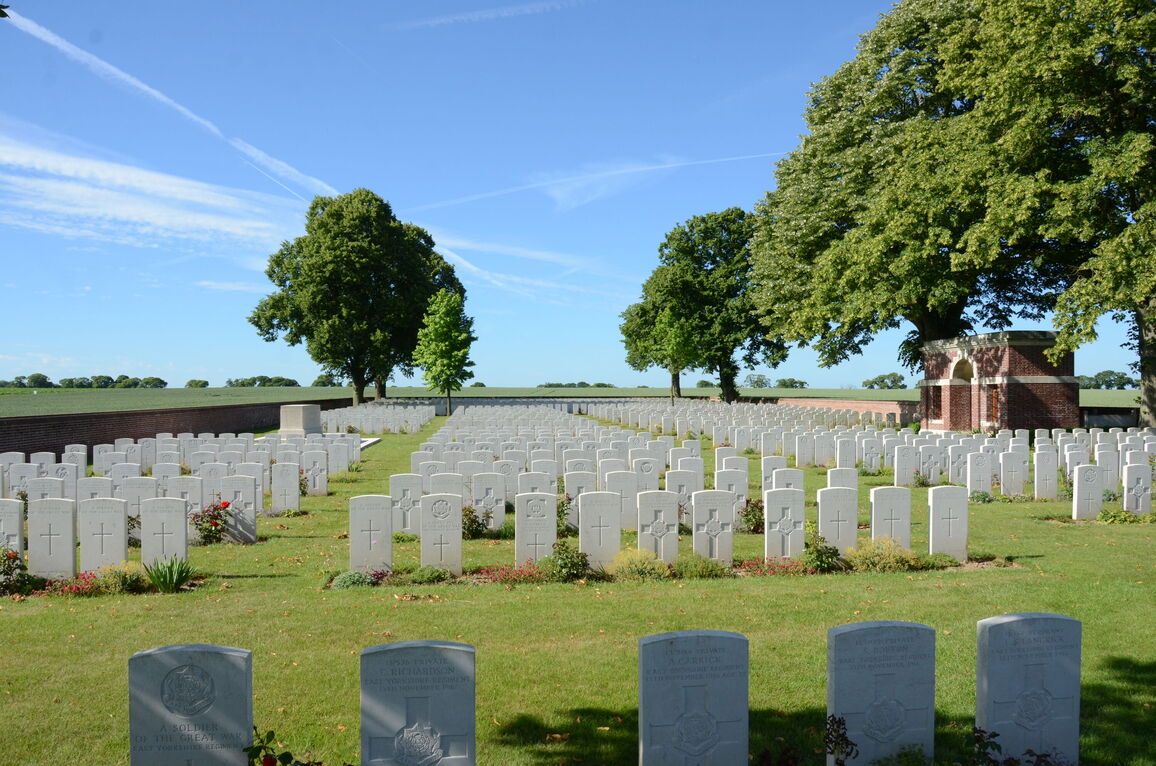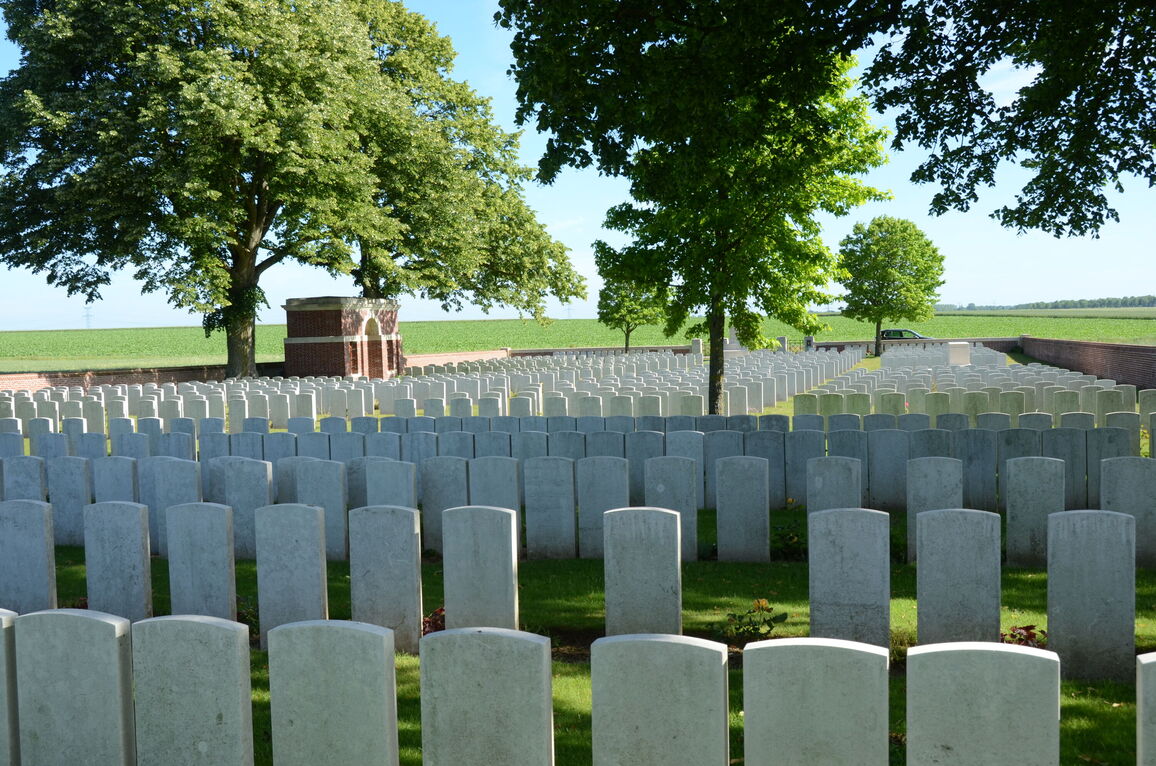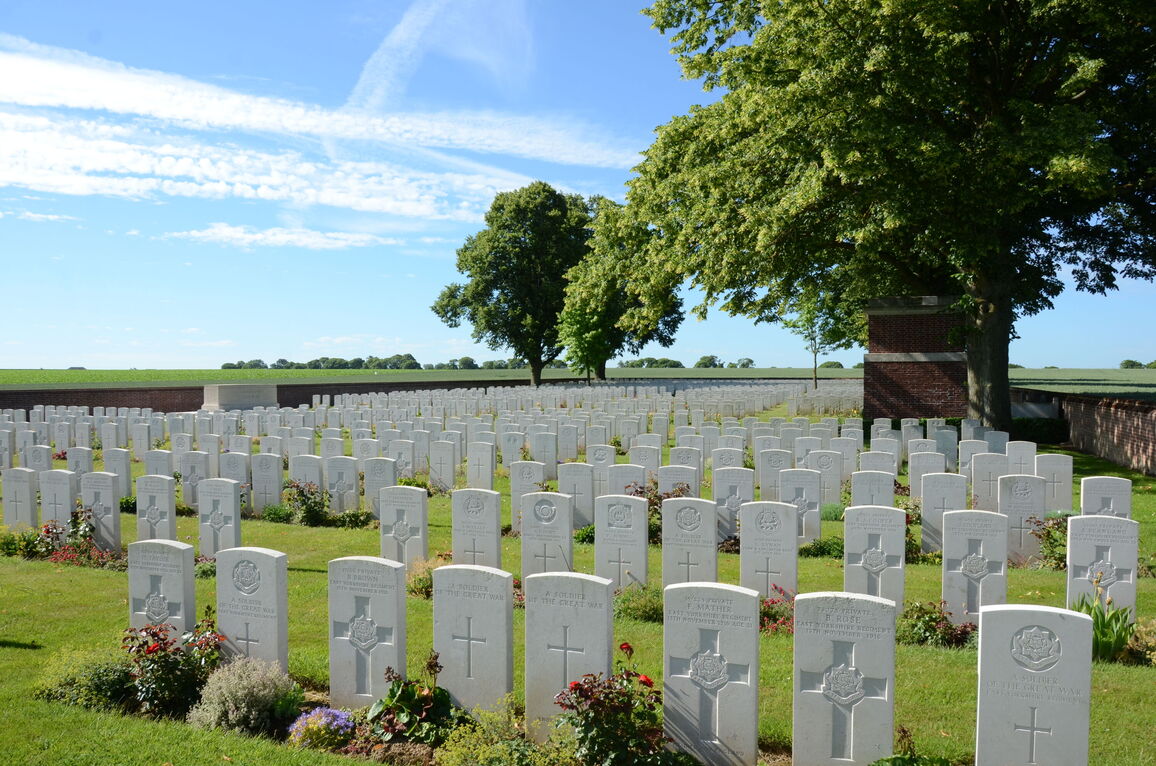Euston Road Cemetery, Colincamps
- Country France
- Total identified casualties 1128 Find these casualties
- Region Somme
- Identified casualties from First World War
- GPS Coordinates Latitude: 50.10181, Longitude: 2.61972
Location information
Colincamps is a village 11 kilometres north of Albert. From Arras take the D919 in the direction of Amiens for 28 kilometres. The cemetery is situated about 1 kilometre from the D919 on the right hand side of the road. Pass Serre Road Cemetery No.2 and continue for 2 kilometres. Take the first right, and the CWGC direction sign to Euston Road Cemetery will be seen at the next Y junction.
History information
Colincamps and "Euston", a road junction a little east of the village, were within the Allied lines before the Somme offensive of July 1916. The cemetery was started as a front line burial ground during and after the unsuccessful attack on Serre on 1 July, but after the German withdrawal to the Hindenburg Line in March 1917 it was scarcely used. It was briefly in German hands towards the end of March 1918, when it marked the limit of the German advance, but the line was held and pushed forward by the New Zealand Division allowing the cemetery to be used again for burials in April and May 1918.
The cemetery is particularly associated with three dates and engagements; the attack on Serre on 1 July 1916; the capture of Beaumont-Hamel on 13 November 1916; and the German attack on the 3rd New Zealand (Rifle) Brigade trenches before Colincamps on 5 April 1918.
The whole of Plot I, except five graves in the last row, represents the original cemetery of 501 graves. After the Armistice, more than 750 graves were brought in from the surrounding battlefields and the following small cemeteries:-
COLINCAMPS CHURCHYARD, contained 14 New Zealand graves and one British, of March and April 1918. The church has been rebuilt on a new site.
COLINCAMPS BRITISH CEMETERY, on the Eastern outskirts of the village. It was used from March 1917 to September 1918, and it contained the graves of 96 soldiers from the United Kingdom, 23 from New Zealand, and one unidentified.
SOUTHERN AVENUE CEMETERY, MAILLY-MAILLET, about 1,000 metres East of Euston Road Cemetery, close to Southern Avenue Trench. It contained 14 New Zealand graves of March and May 1918.
WHITE CITY CEMETERY, AUCHONVILLERS, in the fields about 1,000 metres North-East of Auchonvillers. It was used in 1916 and 1918, and contained the graves of 106 soldiers from the United Kingdom, nine from New Zealand, and three from Canada.
BAYENCOURT COMMUNAL CEMETERY EXTENSION, made by the 1st Essex Regiment in an orchard in April 1918. It contained eleven British graves.
JEAN BART BRITISH CEMETERY, SAILLY-AU-BOIS, near Jean Bart Trench, between Hebuterne and Colincamps, contained the graves of fifteen men of the 1st Bn. 3rd New Zealand (Rifle) Brigade who fell on the 5th April 1918.
JOHN COPSE BRITISH CEMETERIES, HEBUTERNE, named after one of four little woods on the 1916 front line, opposite Serre. These Cemeteries were made by the V Corps in 1917. No. 1 contained 38 and No. 2 139 graves, all of soldiers from the United Kingdom, and almost all of the 12th and 13th East Yorkshire Regiment.
LONELY BRITISH CEMETERY No. 2, COLINCAMPS, about a kilometre North-East of the Village, and close to Central Avenue Trench. It contained 17 New Zealand graves of March and May 1918.
The cemetery now contains 1,293 Commonwealth burials and commemorations of the First World War. 170 of the burials are unidentified but there are special memorials to 32 casualties known or believed to be buried among them, and to two soldiers whose graves in nearby small cemeteries were destroyed in later battles.
The cemetery was designed by Sir Reginald Blomfield.


